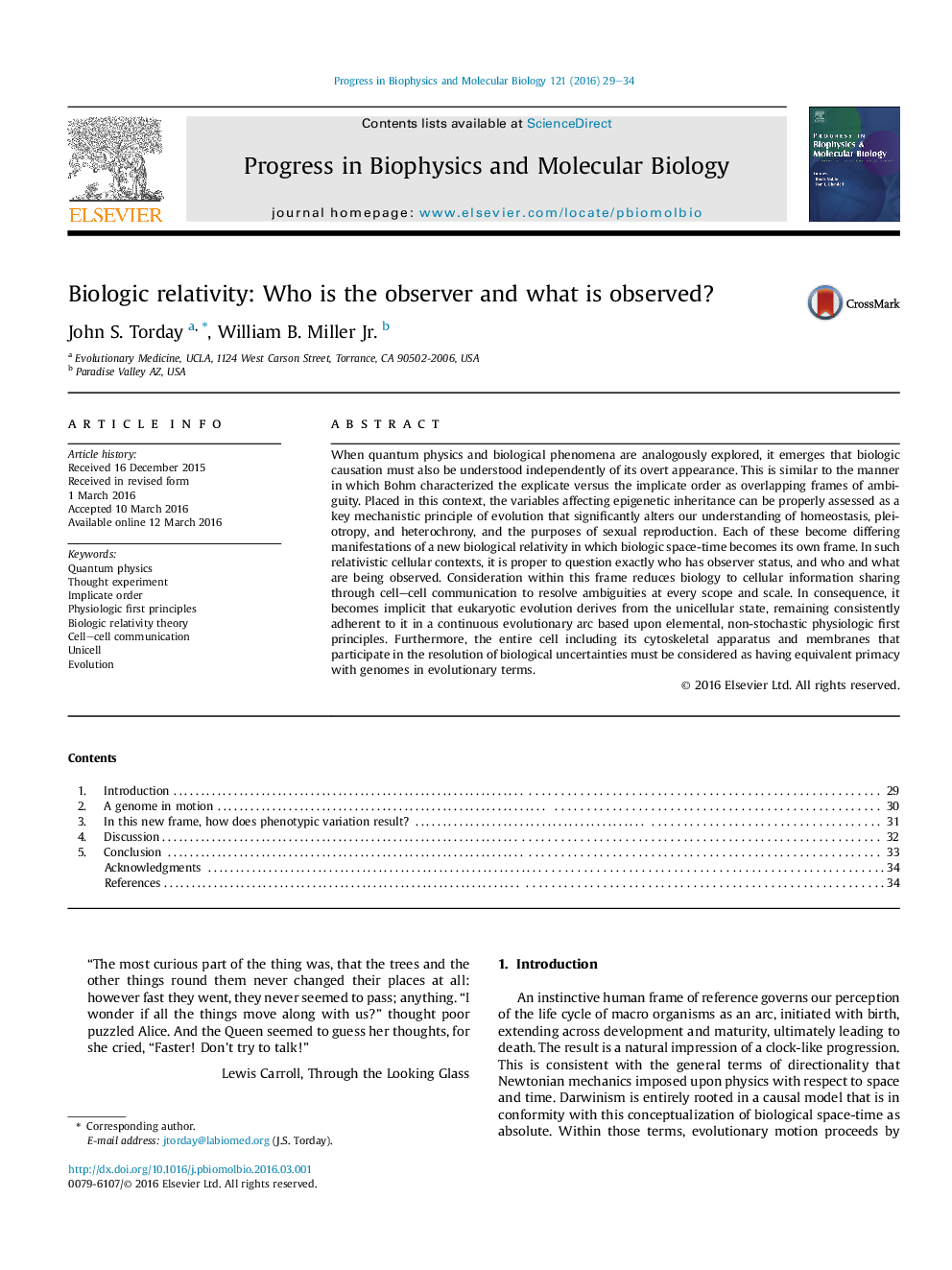| کد مقاله | کد نشریه | سال انتشار | مقاله انگلیسی | نسخه تمام متن |
|---|---|---|---|---|
| 2069988 | 1078449 | 2016 | 6 صفحه PDF | دانلود رایگان |
When quantum physics and biological phenomena are analogously explored, it emerges that biologic causation must also be understood independently of its overt appearance. This is similar to the manner in which Bohm characterized the explicate versus the implicate order as overlapping frames of ambiguity. Placed in this context, the variables affecting epigenetic inheritance can be properly assessed as a key mechanistic principle of evolution that significantly alters our understanding of homeostasis, pleiotropy, and heterochrony, and the purposes of sexual reproduction. Each of these become differing manifestations of a new biological relativity in which biologic space-time becomes its own frame. In such relativistic cellular contexts, it is proper to question exactly who has observer status, and who and what are being observed. Consideration within this frame reduces biology to cellular information sharing through cell–cell communication to resolve ambiguities at every scope and scale. In consequence, it becomes implicit that eukaryotic evolution derives from the unicellular state, remaining consistently adherent to it in a continuous evolutionary arc based upon elemental, non-stochastic physiologic first principles. Furthermore, the entire cell including its cytoskeletal apparatus and membranes that participate in the resolution of biological uncertainties must be considered as having equivalent primacy with genomes in evolutionary terms.
Journal: Progress in Biophysics and Molecular Biology - Volume 121, Issue 1, May 2016, Pages 29–34
